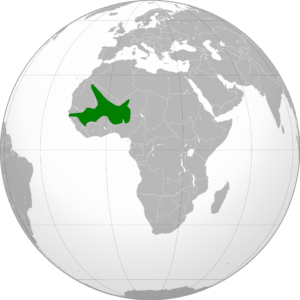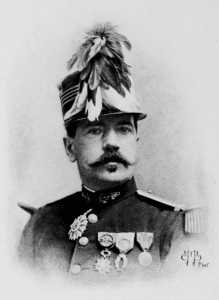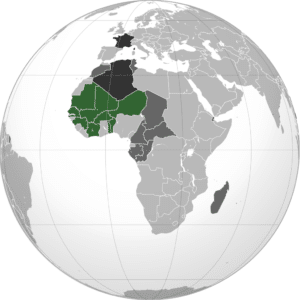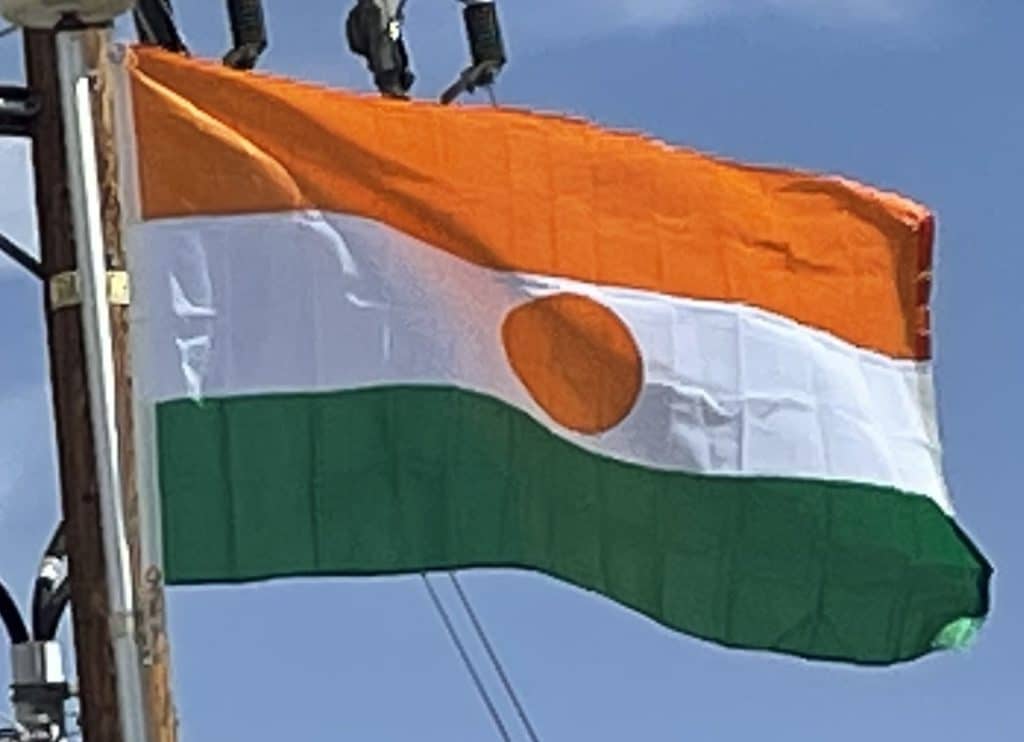This mobility, which would continue in waves for several centuries, was accompanied with further migration to the south and intermixing between sub-Saharan African and North African populations, as well as the gradual spread of Islam. It was also aided by the Arab invasion of North Africa at the end of the 7th century, which resulted in population movements to the south. Several empires and kingdoms flourished in the Sahel during this era. Their history does not fit easily within the modern boundaries of Niger, which were created during the period of European colonialism.

At least parts of modern day Niger were parts of the following empires and independent states:
Mali Empire (1200s–1400s)
Songhai Empire (1000s–1591)
Sultanate of Aïr (1400s–1906)
Kanem-Bornu Empire (700s–1700s)
The Hausa States and Other Smaller Kingdoms (1400s–1800s)
French Niger (1900–58):
In the 19th century Europeans began to take a greater interest in Africa; several European explorers travelled in the area of modern Niger, such as Mungo Park (in 1805–06), the Oudney–Denham–Clapperton expedition (1822–25), Heinrich Barth (1850–55; with James Richardson and Adolf Overweg), Friedrich Gerhard Rohlfs (1865–67), Gustav Nachtigal (1869–74) and Parfait-Louis Monteil (1890–92).

Several European countries already possessed littoral colonies in Africa, and in the latter half of the century they began to turn their eyes towards the interior of the continent. This process, known as the ‘Scramble for Africa‘, culminated in the 1885 Berlin conference in which the colonial powers outlined the division of Africa into spheres of influence. As a result of this, France gained control of the upper valley of the Niger River (roughly equivalent to the areas of modern Mali and Niger). France then set about making a reality of their rule on the ground.
The French started the colonization process in 1897. This marked the beginning of a long series of violent events and outright atrocities that would mark the process of establishing and maintaining French control.
The Military Territory of Niger was subsequently created within the Upper Senegal and Niger colony (modern Burkina Faso, Mali and Niger) in December 1904 with its capital at Niamey, then little more than a large village. The border with Britain’s colony of Nigeria to the south was finalized in 1910. The capital of the territory was moved to Zinder in 1912 when the Niger Military Territory was split off from Upper Senegal and Niger, before being moved back to Niamey in 1922 when Niger became a fully-fledged colony within French West Africa.

The borders of Niger were drawn up in various stages and had been fixed at their current position by the late 1930s.
The French generally adopted a form of indirect rule, allowing existing native structures to continue to exist within the colonial framework of governance providing that they acknowledged French supremacy. The Zarma of the Dosso Kingdom in particular proved amenable to French rule, using them as allies against the encroachments of Hausa and other nearby states; over time the Zarma thus became one of the more educated and westernized groups in Niger.
